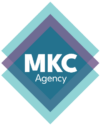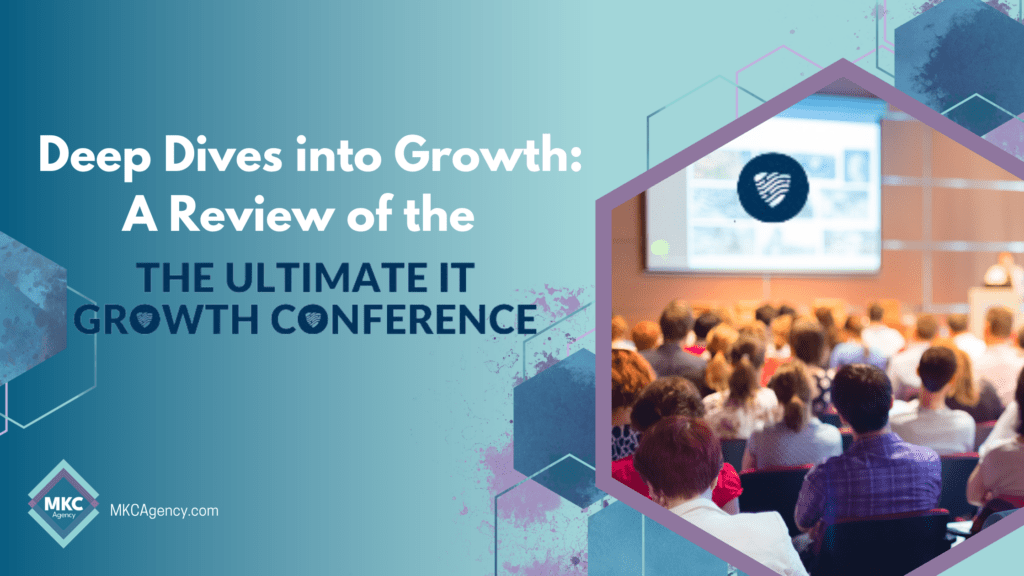Recently, I had the extraordinary privilege of attending the MSP Ultimate Growth Conference, a two-day event showcasing some of the most prominent thought leaders in the Managed Service Provider (MSP) space. Each session offered in-depth insights into different facets of MSP growth, from free lead generation tactics to understanding the intricacies of your buyer personas.
I am thrilled to provide an overview of the key takeaways from each session. This conference covered a wealth of crucial topics that can significantly influence an MSP’s growth trajectory. Let’s dive in.
Maximizing Lead Gen Opportunities with Jennifer Bleam
Jennifer Bleam, the conference host and renowned MSP marketing expert, opened the conference with a focus on free and inexpensive lead-generation strategies. She delved into the nuances of referral leveraging, explaining how a well-orchestrated referral program could drastically reduce customer acquisition costs. Jennifer also discussed the significance of frequently asked questions (FAQs) and how they can be leveraged to showcase expertise and reliability. On the digital front, she emphasized the value of an optimized LinkedIn presence, detailing how a compelling profile and active engagement could drive visibility and attract potential clients.
Achieving Robust Security with Wes Spencer
Wes Spencer a cybersecurity expert from Cyberfox, led a compelling session centered around identifying gaps in security solutions, focusing on the use of the Cyber Defense Matrix.
The Cyber Defense Matrix provides a comprehensive framework that MSPs can use to understand and manage their security needs. It categorizes cybersecurity into five key functions: Identify, Protect, Detect, Respond, and Recover, which are then plotted against five categories of cybersecurity assets: Devices, Applications, Networks, Data, and Users. This intersection of functions and assets allows for a well-rounded view of a business’s cybersecurity status, effectively highlighting any potential weaknesses.
One of the key takeaways from Wes’s session was the concept of “left of boom” and “right of boom”. He explained that preventative measures, such as Identify and Protect, fall into the “left of boom” category and are largely software solutions. These are typically more cost-effective and easier to implement. On the other hand, “right of boom” involves Detect, Respond, and Recover. These are human-centric actions and can often be more expensive, but are crucial for effective cybersecurity.
Interestingly, Wes didn’t delve into his work at Cyberfox during his session, choosing instead to provide a valuable look at the wider cybersecurity landscape. By using tools like the Cyber Defense Matrix, he showed how MSPs can better understand and improve their cybersecurity measures, ensuring they provide robust and comprehensive protection for their clients. His session left attendees with actionable insights into strengthening their cybersecurity strategies.
LinkedIn as a Business Lever with Brynne Tillman
Brynne Tillman of Social Sales Link demonstrated how MSPs could better leverage LinkedIn to engage their network and attract prospects. She walked through profile optimization strategies, including the importance of a well-crafted summary and a detailed work history. Brynne also explained how to generate compelling content that engages the audience, drives interactions, and ultimately strengthens the network. Her session underscored LinkedIn’s potential as a lead generation and engagement platform when used strategically.
Overcoming Sales Objections with Jennifer Bleam
In a subsequent session, Jennifer Bleam returned to address one of the most challenging aspects of sales – overcoming objections. She directed her focus towards four traditional categories of objections: price, authority, need/understanding, and time.
At the same time, my interaction with fellow attendees during a workshop session stirred up a thought about an additional, fifth category of objection – risk. This category is particularly relevant in the MSP industry, given the concerns clients may have about potential risks associated with switching IT providers. These may include service disruptions, technical complications, or the possibility of a misalignment with their existing systems – the ‘risk objection.’
Looking through the lens of a business owner, I feel two objections stand out most prominently: time and price. Time is invaluable, and the considerable commitment required to change IT providers, along with the potential disruption to established procedures, makes it a significant factor. Price, too, is a notable objection as business owners grapple to ensure the MSP services’ cost aligns with the value they expect to receive.
Jennifer provided robust insights into managing objections with her UTM (Understand, Tackle, Market) framework. This strategy advocates for empathizing with the client’s objections, effectively resolving them, and promoting the MSP’s solutions in a way that addresses these concerns and aligns with the client’s needs.
Incorporating the aspect of risk into our understanding of and approach towards sales objections could enhance this strategy. This idea, which came out of the workshop interaction, could significantly shape the way we address sales objections in the MSP industry. By acknowledging and addressing the ‘risk objection,’ we can better alleviate potential clients’ apprehensions and foster a stronger, more trusting relationship.
Leveraging DISC Profiles with John Hill
John Hill, the Founder of Adapted Growth, took center stage at the MSP Ultimate Growth Conference to offer a fresh perspective on understanding and communicating with buyer personas. He argued against a prevalent sales approach, especially within technical industries, which involves “info-dumping” a wealth of technical details onto potential customers. Instead, he posited that such a method could hurt close rates and alienate buyers, who are often more motivated by their needs and objectives than the technical prowess of a product or service.
John’s alternative? Leveraging DISC personality profiles to forge more meaningful, personalized connections with potential buyers. DISC, which stands for Dominance, Influence, Steadiness, and Compliance, is a behavior assessment tool primarily used to enhance productivity, teamwork, and communication. Each letter represents a different personality trait:
Dominance: People who are direct, results-oriented, assertive, and competitive.
Influence: Those who are sociable, talkative, and lively.
Steadiness: Individuals who are gentle, accommodating, patient, and supportive.
Compliance: Those who are private, analytical, logical, and systematic.
Understanding these traits, John argued, can give you a unique insight into your buyers’ communication style, preferences, and decision-making processes.
Moreover, he introduced the audience to tools such as Lavender that can help identify these profiles based on email communication. By gaining a sense of a potential buyer’s DISC profile, your communication can be tailored to their personality type. For example, someone with a high Dominance score may appreciate concise, direct communication, while a person with high Steadiness might value patience, support, and understanding.
John Hill’s session was a profound reminder of the psychological aspect of sales. It underscored that successful selling goes beyond the technicalities of a product or service. It lies in understanding your buyer’s psychology, their personality traits, and molding your approach to resonate with them. This approach fosters not only more effective communication but also the potential for stronger relationships and improved close rates. I couldn’t help thinking during his session how killerLavender is for helping us to identify these profiles, enabling more personalized and effective email communication. John’s session was a potent reminder that understanding buyer psychology plays a significant role in successful sales.
Crafting a Resonant Personal Brand with Erik Cabral
In one of the final sessions, Erik Cabral from On Air Brands enlightened the audience about the importance of personal branding in business growth and success. His unique take on personal brand development diverges from the traditional and offers a fresh perspective: the intersection of ‘personal’, ‘perceived’, and ‘pursuit’.
Under this approach, the ‘personal’ pertains to your individual values and attributes, the ‘perceived’ to how others see you, and the ‘pursuit’ to your vision or goals. All three elements are essential in creating a personal brand that is authentic, resonates with your audience, and aligns with your personal and business vision.
Erik Cabral encouraged attendees to craft a compelling personal narrative, leveraging this three-pronged approach to create a brand that truly represents them. He underscored the idea that “people connect with people”, reinforcing the fact that a well-crafted personal brand could significantly enhance connection and engagement with your target audience.
However, it’s crucial to understand that brand-building tactics such as starting a podcast should be part of a broader content ecosystem. It’s not about creating content in isolation; rather, it should be part of an interconnected network of content that consistently reinforces your personal brand and message across different channels.
In my own experience working with MSPs, I’ve found it vital to build a community or following to truly make an impact with content. Merely producing content without cultivating a dedicated audience is akin to shouting into the void.
In a nutshell, the content should serve a double role: it should not only reinforce your personal brand but also foster a sense of community among your audience. Remember, the goal is not just to reach people—it’s to resonate with them. And that can only be achieved if your personal brand and content ecosystem work harmoniously towards your pursuit.

